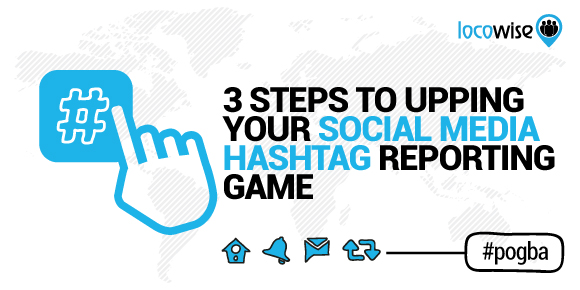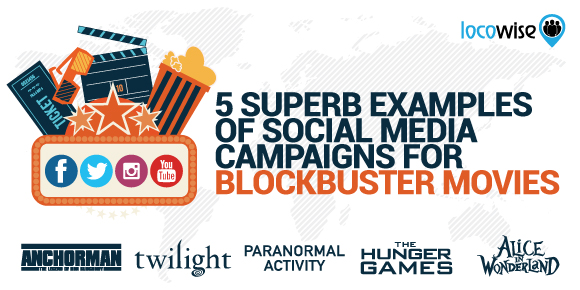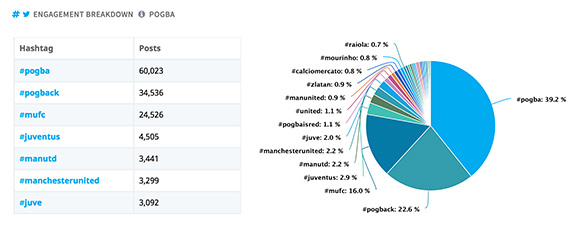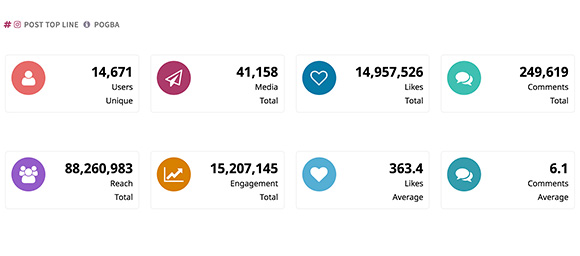3 Steps To Upping Your Social Media Hashtag Reporting Game
Sahail Ashraf posted on 1 September 2016
You know you need to track them. You understand the value they add to campaigns. So why has reporting the success and adoption of social media hashtags become such a headache?
In June 2014, the word ‘hashtag’ got added to the Oxford English Dictionary. An undeniable milestone for social media indeed, signifying the influence it has had on us all both commercially and non-commercially.
At Locowise, we may get asked about the importance of hashtag tracking by our new and existing clients from time to time, as it’s often an area that can elude typical social media reporting processes.

Truth be told, the insights that can be gained from them can be far less fluffy than you think. In this post, we hope to kickstart or maybe just help you up your hashtag reporting game in a just a few simple steps.
Step 1) Understand what a hashtag is…
We know a hashtag is a word or phrase most commonly associated with social media content posted via the likes of Twitter and Instagram, where a word or phrase is signposted with a # symbol then organised by the relevant topic.
Exceptionally high volumes of posted hashtags allow terms to trend and even become the subsequent heartbeat of user and influencer interactions across these social media channels. Visibility of these posts can consequently improve and provide brands with an opportunity to unearth engagement from users interested in a specific topic.
Step 2) Understand the typical intent from brands and what yours is…
From a brand’s perspective, the aim of the hashtagging game is predominantly the steering and aligning of social media interactions towards a particular topic, brand, event or person.
For example, let’s take a surprise gold medalist at Rio 2016, a club record signing of a footballer or a blockbuster movie release, or even a globally recognised brand launching a product people instantly fall in love with. They’re all examples of instances where hashtags have been vital cogs in the great big social media wheel we’re on every day.
But your planning process should arguably never not involve considering how to effectively hashtag. Knowing why you’re making them central to your campaign will effectively determine whether performance analysis becomes a productive or counter-productive exercise.

Start by giving thought to whether you want to build adoption with something that is on brand? Or alternatively, specific non-branded slogans that support your message and the intent you have for users to take action!
3) Understanding where the opportunities lie…
You may ask, what is there to be gained? Loads actually. Hashtags facilitate potentially heightened reach and engagement volume across a multitude of channels.
They have become synonymous with commercially valuable millennial users, and are the envy of those looking to record high volumes of user adoption and engagement. For brands and agencies, they are particularly valuable assets.
Show me some stats!
Below we’ve summarised a selection of just some the insights that can be generated for your campaign’s hashtags with Locowise.
Exhibit A: Engagement Breakdown – @ManUtd’s record signing of #Pogba in July/August, with a whole host of related hashtag volumes lighting up Twitter.
This chart area is ideal if you’re keen to grasp the related discussion topics and general adoption of the related keywords proving popular among your Twitter users.
Let’s forget footballers for a second, this could be your ecommerce brand. In this section of the hashtag report, you’d gain specific hashtag volumes for specific product-centric terms.

Exhibit B: Post Top Line Summary – Adoption of #Pogba storms Instagram at the beginning of August on Instagram.
The Top Line chart area is there to provide you with quick, at a glance metrics associated with your hashtag. Definitions for these indicators are as follows;
● Users: The total number of unique users who used the hashtag in a post during your reporting date range.
● Media: The total number of posts published.
● Likes: The total number of times users liked these posts.
● Comments: The total number users commented on these posts.
● Estimated Reach: The total number of followers who saw the hashtag in the post.
● Engagement: The number of likes and comments recorded against these posts.
● Average Likes: The average number of times users liked a post containing said hashtag.
● Average Comments: The average number of times users commented on a post containing said hashtag.





